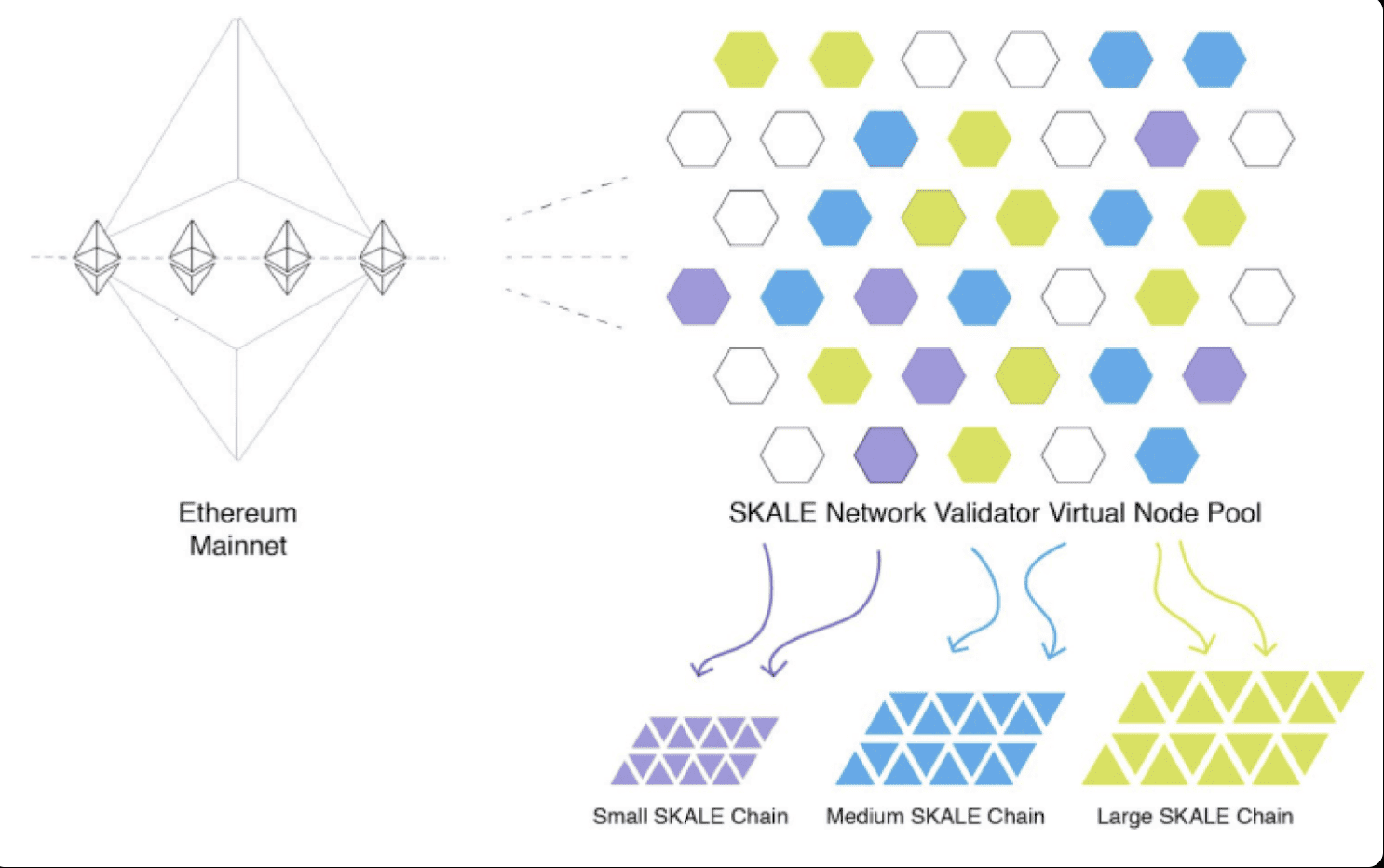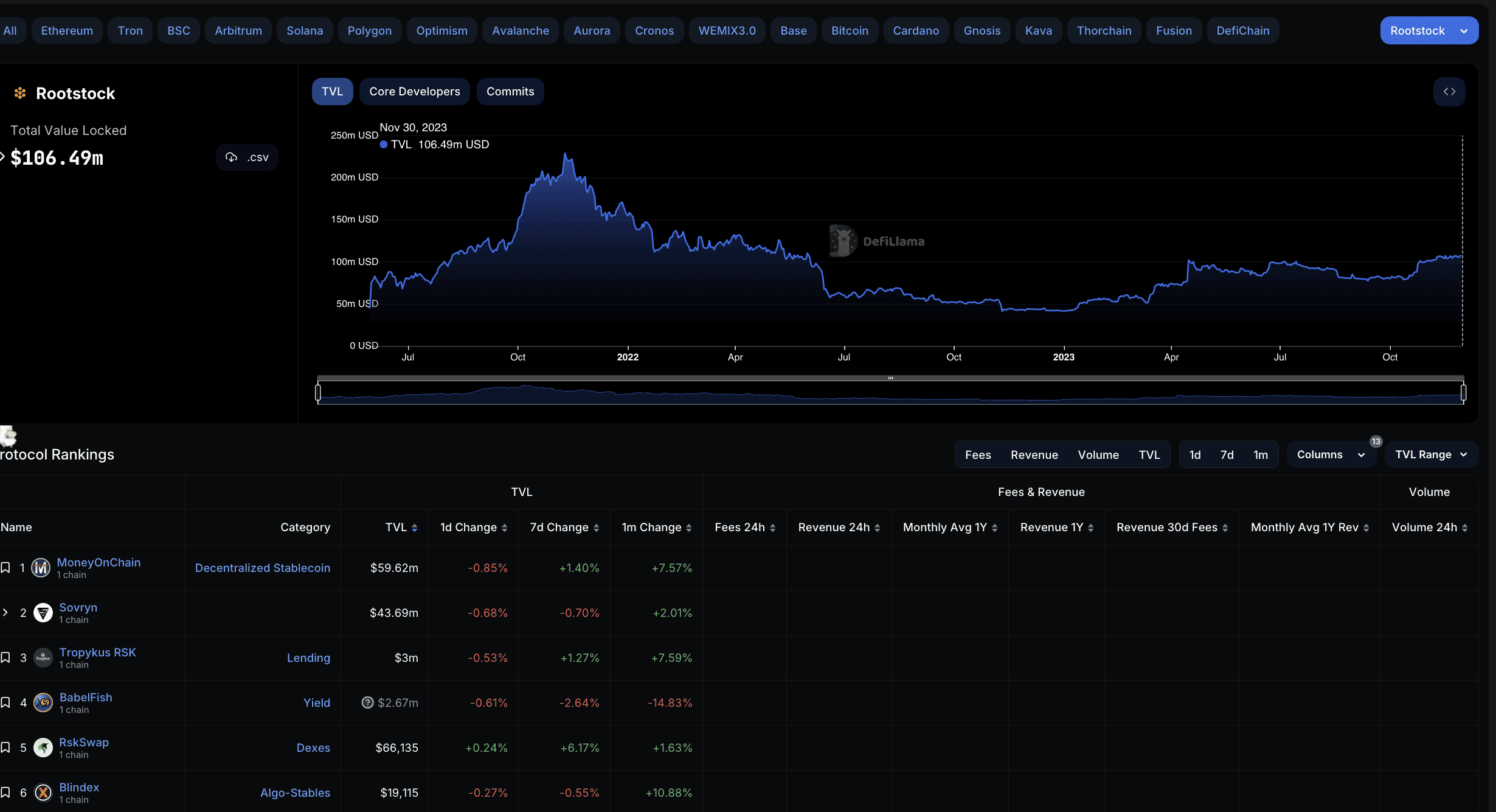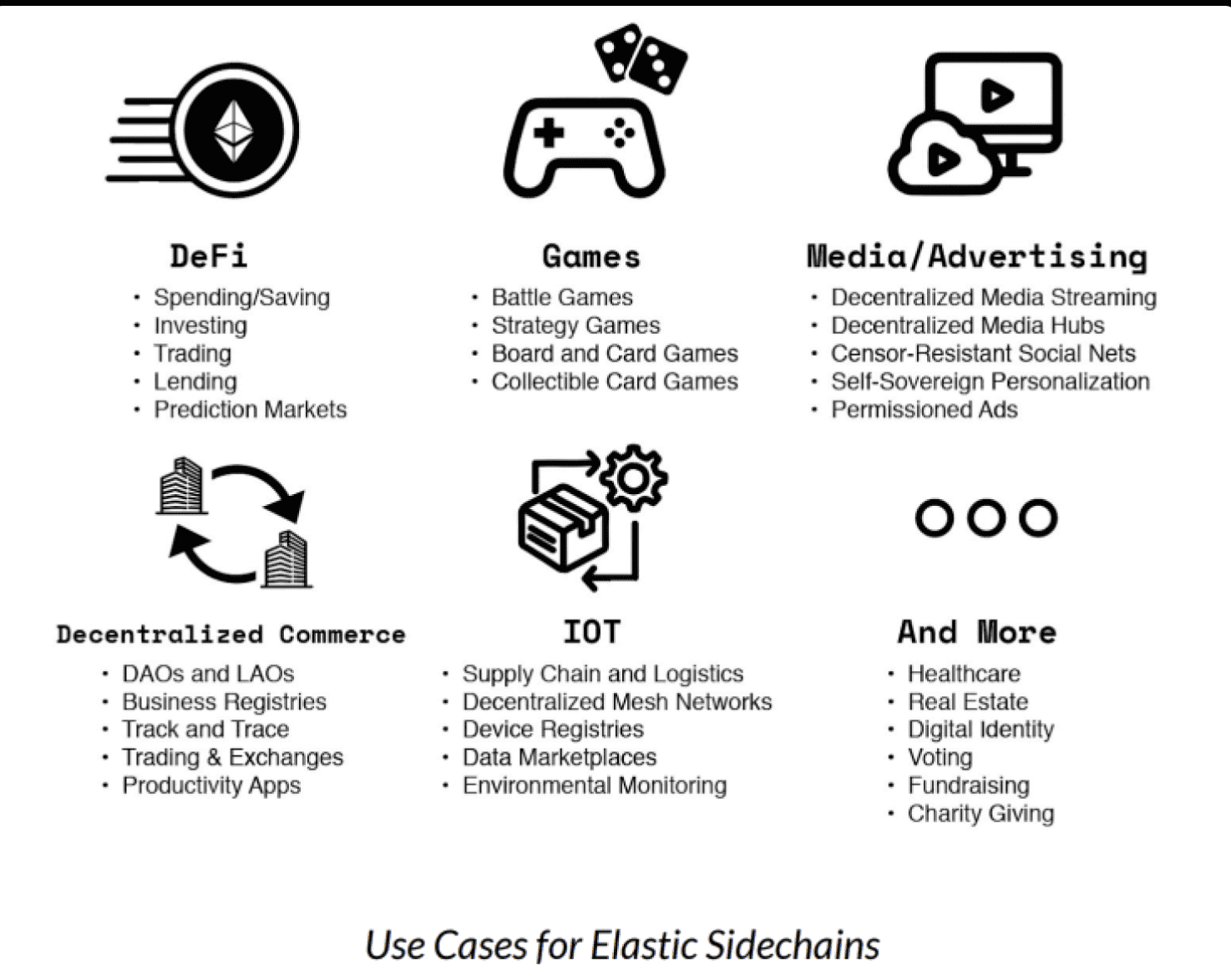The blockchain world is evolving at a clip. More established chains like Ethereum are seeing constant surges in traffic, provoking users to look for faster and more affordable solutions. So what are sidechains, and can they help? As the name suggests, sidechains are secondary chains tethered to the parent chain while working in parallel. You might have already guessed that sidechains help the parent chain offload traffic, amplifying throughput and lowering network fees.
This guide unpacks sidechains and their mechanism from a technical perspective, plus looks at examples, pros and cons, and the future of this technology.
What is a sidechain?
A sidechain is an independent or rather separate blockchain linked to a parent chain. Sidechains operate alongside the main chain, focusing on enhancing the main network’s capabilities.
Notably, sidechains have their own consensus mechanisms and rules. However, as they are connected to the parent chain, there are set rules to aid information and asset transfers between one sidechain and the concerned parent chain.

A quick example could be Bitcoin’s popular Liquid Network, which is a sidechain of the Bitcoin mainnet. The Liquid Network can facilitate faster transactions, lowering the pressure on the Bitcoin network and helping it scale.
SponsoredAre sidechains layer-2?
As mentioned, sidechains, like layer-2 solutions, are great for scaling the parent chain. So, is a sidechain the same as a layer-2 scaling solution?
Layer-2 solutions are like rollups built atop the parent chain to improve efficiency. These chains, such as Polygon, can have their own network of sidechains to improve the layer-2 solution’s throughput further. Dedicated parent chain-native sidechains work independently and have a two-way mainnet peg.
Sidechains can, however, work as layer-2s. Here is how:
Remember how Polygon started as a sidechain to Ethereum? As it shares the security posture with Ethereum, the network is currently a layer-2 solution. However, the sidechain traits remain ingrained as Polygon’s Plasma tech helps move data between Ethereum and the child chains of Polygon.
However, Arbitrum and Optimism, some of the more popular networks, function as layer-2 networks and do not qualify as sidechains. Even networks like Cartesi and Loopring are layer-2 solutions meant for scaling and are not run-on-the-mill Sidechains.

Why are sidechains so desirable?
There are a host of reasons behind the popularity of sidechains. These include the following:
- Helping the mainnet offload transactions
- Reducing gas fees by moving transactions to the less demanding networks
- Lowering the network congestion
The sidechain mechanism
When it comes to exploring sidechains, there are a few concepts that come in handy. For instance, a standard sidechain features a two-way peg, ensuring that assets can move freely between the chains per a set mechanism.

A better way of understanding the same is to look at the Bitcoin Liquid Network. As a sidechain of Bitcoin, the Liquid Network doesn’t actually take assets from the mainnet. Instead, the mechanism is such that the amount of BTC to be transacted is fixed on the mainnet, and an equivalent amount of L-BTC or Liquid Bitcoin is unlocked or, rather, made available on a separate chain. This is what the two-way peg stands for, as users can redeem BTC on the main network by showing the L-BTC as a receipt.
Here is a quick example. Imagine a user who wants to move BTC from the mainnet to the Liquid Network. For that, the user will need to move BTC to the output address of the sidechain (Liquid Network). However, there isn’t a direct transfer. Instead, it locks BTC on the parent blockchain and unlocks L-BTC on the sidechain at the given output address.
Another Bitcoin sidechain with a relatable analogy:
Sidechains have their own selection of smart contracts, allowing devs to integrate and test their own features. To understand the smart contract implementation better, we can take a look at Rootstock (RSK), one of Bitcoin’s sidechains. While the Bitcoin mainnet doesn’t explicitly support smart contracts, RSK offers Ethereum-style variants, all while staying connected to the BTC.
Sponsored Sponsored
Finally, sidechains can host their own consensus protocols, with Polygon continuing with the proof-of-stake architecture back when Ethereum was still supporting proof-of-work.
Sidechain implementations and the relevant examples
Now we have discussed the technical elements of sidechains, we can look at the implementations of the technology.
Ethereum Plasma
Plasma is one of the proposed Ethereum sidechain concepts or implementations that fathered Polygon’s very essence. The idea is simple. With Ethereum and Plasma, there will be several sidechains or rather child chains connected to the Ethereum mainnet. Plasma aims to lower the gas fees associated with the Ethereum network, all while improving the transaction throughput.
Skale
This Ethereum-specific sidechain acts as a hub for DApps and smart contracts. Skale is a multi-chain network capable of scaling the Ethereum EVM network.

Plus, it introduces the concept of elastic sidechains with massive potential across DeFi, crypto gaming, IoT, and other spaces.
Did you know? CrossBell is an innovative, lesser-known implementation of the sidechain technology, which offers features beyond scaling and transaction processing. CrossBell is EVM compatible and follows the proof-of-authority consensus.
Gnosis
Here is an Ethereum sidechain with 100,000+ validators maintaining security posture and network health. The primary focus of the Gnosis chain is to reduce gas fees, specific to the Ethereum sidechain.

Other sidechain implementations include SmartBCH for the Bitcoin Cash ecosystem and Polygon for the Ethereum network, which also doubles down as a layer-2.
SponsoredAnother Ethereum-native sidechain:
Why have sidechains in the first place?
Here are some of the advantages of sidechains you can consider:
Improved efficiency
Ethereum sidechains, including Polygon, increase network efficiency by helping the mainnet offload a lot of transactions. As Polygon still has the layer-2 capabilities, the final list is still batched onto the mainnet. Yet, that works as a single transaction, and the mainnet’s congestion is consequently lowered considerably.
Improved mainnet security
While this might sound a tad surprising, efficient sidechains can actually help amplify network security. Here is how it works. Take the Bitcoin Liquid Network as an example. This sidechain network can handle confidential transactions on Bitcoin’s behalf, focusing on the private movement of funds and data.
Plus, there is the asset transfer mechanism and the two-way peg support that allows users to move assets from the Liquid Network to the Bitcoin mainnet.
Helping mainnets achieve goals
Massive mainnets like the Ethereum blockchain network bring in key upgrades in the form of Ethereum Improvement Proposals or EIPs. While the execution of these ethereum EIPs depends a lot on the mainnet itself, sidechains, via transaction offloading, can help the parent chain reach its full potential.
Plus, sidechains can also serve as the testing ground for several EIPs or implementations. It is also worth noting that in case some EIPs become controversial, sidechains can show up as alternatives.
An example of sidechains to improve mining:
Another interesting thing about sidechains is that they can facilitate easier mainnet upgrades, courtesy of the support for smart contracts. This functionality is best utilized by Bitcoin’s sidechain Rootstock, which is now capable of testing several smart contract-driven features without impacting the mainnet.
Risks and challenges associated with sidechains
Even though sidechains have many benefits, there remain a few implementation risks. Some of the more critical ones are as follows:
Security risks
Sidechain implementation, if done wrong, can lead to several security concerns. Unlike layer-2 solutions that inherit their security posture from the parent chain, sidechains boast their own.
But then, the lack of popularity often means a smaller validator or miner pool — something that can pose security risks related to 51% attacks and other threats. Plus, with the concept of output address housed at a separate blockchain, the security risks are more evident than ever.
Limited decentralization
Due to smaller validator pools, sidechains can become centralized over time, discouraging the ethos of decentralized blockchain networks. For instance, sidechains using the PoA consensus have a set number of trusted validators, a move that furthers security but might impact the decentralized quotient of the chain.
Fragmented crypto ecosystems
Unlike layer-2 solutions that are built on top of the parent chains and are meant to be interoperable, sidechains might end up furthering a more fragmented ecosystem. For instance, due to its independent nature, a sidechain pegging to and from the Ethereum blockchain network might develop a token of its own. This might not align with the ERC-20 or even the ERC-721 standards, leading to transfer complications.
While scalability is one of the major sidechain traits, reduced finality can be a concern in the case of slower chains. Plus, sidechains and parent blockchains follow the bridge mechanism, something that can be vulnerable, leading to security risks.
“My argument for why the future will be multi-chain, but it will not be cross-chain: there are fundamental limits to the security of bridges that hop across multiple “zones of sovereignty.”
Vitalik Buterin, co-founder of Ethereum: X
Should the security risks feel too high, layer-2 solutions led and empowered by concepts like zkEVM make sense. With zkEVM-powered layer-2 solutions, transactions remain more private, all while aligning with the Ethereum-native smart contracts.

Another option to combat the risks associated with sidechains is to opt for dedicated, pegged layer-1 chains like Stacks. Stacks might work like a Bitcoin sidechain, but it isn’t one in the traditional sense. Instead, it doesn’t have a two-way peg with Bitcoin but is anchored one-way using the proof-of-transfer (PoX) consensus.
The future of sidechains
Now that we know what sidechains are and how they operate, it is time to look further. With layer-2 solutions like Arbitrum and Optimism doing a pretty good job in scaling their parent chain — Ethereum — the success of these chains will depend on security implementations, the degree of decentralization, and certainly interoperability. Once these concerns are taken care of, we can expect a large-scale sidechain adoption as networks like Ethereum and Bitcoin will require incremental scaling.

